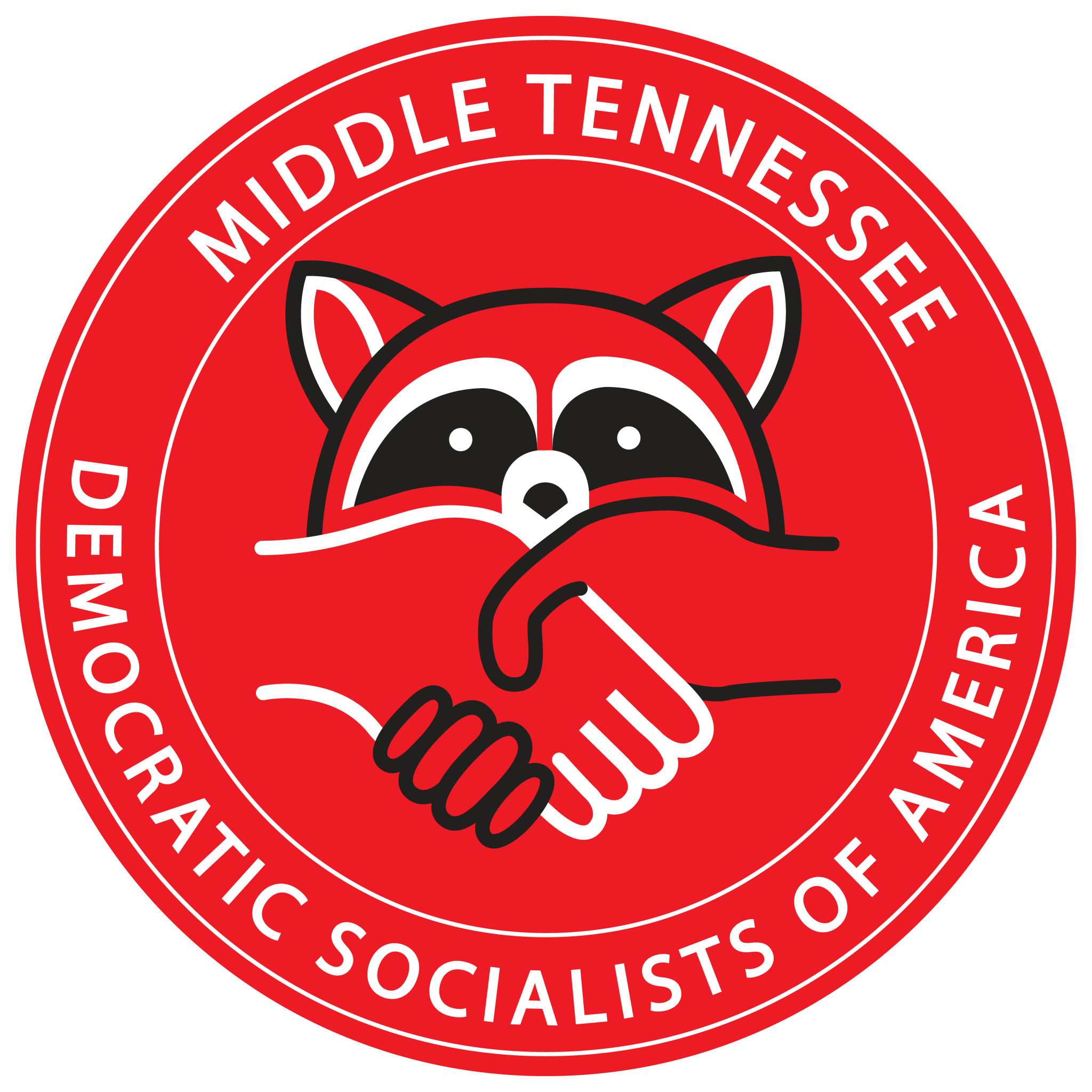

Reaffirming Our Support for Palestinian Liberation
To our comrades,
We are writing to reaffirm our commitment to transforming DSA into a fighting organization of the exploited and oppressed, built on the power of the working-class, rather than a handful of politicians and self-appointed movement leaders.
On March 18, 2022, the NPC voted to de-charter BDS WG, despite its compliance with their request to turn over its social media passwords. While the NPC’s statement leaned on bureaucratic explanations, there is no doubt that this was retaliation for BDS WG’s public criticism of Congressman Jamaal Bowman, and the NPC’s decision not to censure him for supporting Israeli defense funding. Ultimately, it seems the NPC’s only concrete reason for de-chartering BDS WG was its refusal to delete a month-old Twitter thread criticizing a popular NPC position defending Bowman.
In a statement of dissent posted to the internal discussion board, NPC members including Jen B, Jen M and Kara H wrote “we invite you to commit to struggling through conflict, to remain true to our anti-capitalist and anti-imperialist values and support us in standing with our Palestinian and Palestinian-allied comrades against censorship.” We stand by this statement.
Our dissenting leaders have demonstrated what true leadership means—standing without apology for the oppressed and rallying the rank-and-file members who make DSA worth fighting for to their cause. This is the DSA we joined: an organization made up of our comrades who walk picket lines in the pouring rain, who clash with riot police in the movement for Black Lives, and who organize into the dead of night to see our cause through, the rank-and-file majority who do not flinch in the face of the ruling-class. We will not stand and watch while DSA is hollowed out in the name of backroom deals with politicians.
Since the initial decision by the NPC on March 18, 2022, the NPC has reversed their decision, reinstating the BDS WG. However, the working group’s leadership has not been reinstated or had the ban lifted.
Middle Tennessee and Nashville is comprised of many Palestinian people. In early 2021 this chapter helped organize rallies alongside our Palestinian community—these marches attracted over 1000 people. At these events, the participation was staggering—there were children who have never been able to visit their homeland due to Israeli apartheid. There were parents and teenagers who were refugees that had their homes destroyed or taken from them. There were even grandparents who are older than the state of Israel who remember their homes and their neighbors.
Palestine solidarity is a local effort. The Metro Nashville Police Department has participated in the Georgia International Law Enforcement Exchange (GILEE) program. This program sends police officers to Israel to learn brutal tactics from the Israeli occupying police and its military. This program also invites Israeli forces to the US to teach our law enforcement. The same tactics that have led to the deaths of people in Nashville are the same ones that they learned in Israel and through the GILEE program.
It is obvious that here in our communities there is support for the Palestinian cause. Moreover, solidarity with Palestine and her people and supporting the Boycott, Divestment, and Sanction movement is a moral, ethical, and logical obligation to any person, let alone a socialist. This chapter has always held a deep love and solidarity for our Palestinian comrades and will continue to do so.
We affirm the following commitments:
- We demand the NPC reinstate the BDS WG’s previous leadership and lift the ban on national leadership placed on them.
- We demand the NPC affirm the right of lower bodies—including all chapters, working groups, standing committees and caucuses—to publicly criticize higher bodies, up to and including the NPC. Without open criticism, our democracy will wither and die.
- We commit to the struggle for a liberated and democratic Palestine, and to the merger of socialism and anti-imperialist movements across the world. We will work toward a DSA that lives up to this commitment.
- In the coming year leading to the 2023 DSA Convention, we will work toward building a unified opposition in DSA committed to a strategy of international working-class revolution and against collaboration with the ruling class.
- Middle Tennessee DSA reaffirms our commitment to Palestinian Civil Society’s call and reaffirm our full support of BDS.
- Middle Tennessee DSA reaffirms itself as in full solidarity with Palestinian Civil Society’s struggle against apartheid, colonialism, military occupation and for equality, human rights, and self-determination.
- Middle Tennessee DSA affirms that any political solution to the ongoing crisis must be premised on the realization of basic human rights, including all rights outlined in the BDS call.
- Middle Tennessee DSA will establish a dedicated BDS and Palestine Solidarity Working group to show solidarity and make change in our region, and we invite all DSA chapters to do so as well.
The struggle for Palestinian liberation is as much a local struggle as it is an international one. Only through global solidarity and action in concert with the international working class will we see a free Palestine. The fight for Palestinian liberation will forever be a line in the sand for this chapter and its members.
We will not suffer attempts to undermine the struggle for Palestine or her people.
In love and solidarity,
Middle Tennessee Democratic Socialists of America


CSPD Refuses to Be Held Accountable at Law Enforcement Transparency and Accountability Commission (LETAC) Meeting
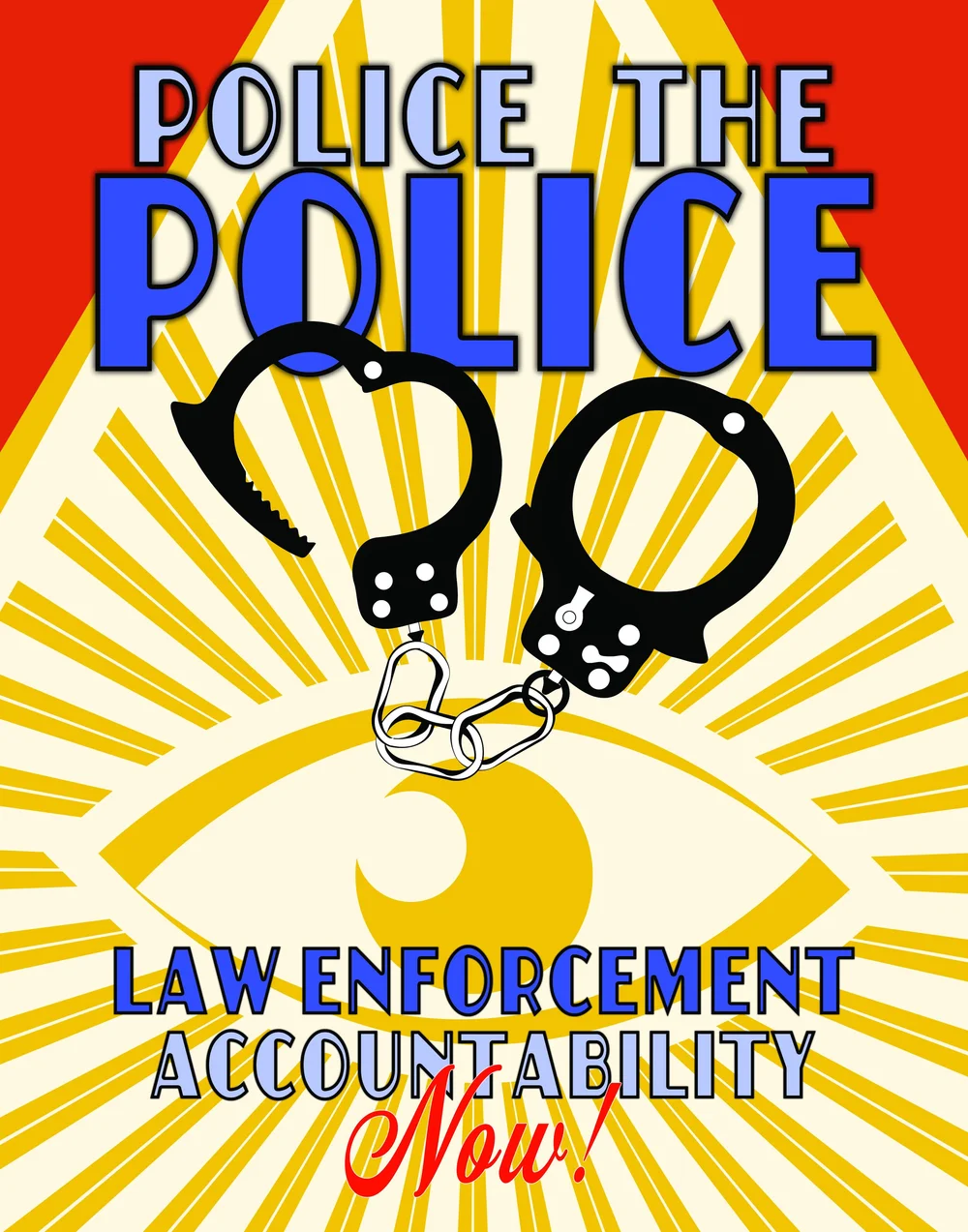
On Monday, April 4th, 2022 a meeting of the Colorado Springs Law Enforcement Transparency and Accountability Commission met, with several items on the agenda that pertained to COSDSA. The subjects discussed were how the CSPD conducts undercover investigations, how the CSPD disciplines officers who break the law, and how the CSPD handles officers who use excessive force with citizens. In addition to the commissioners, several police officers, interim Police Chief Vasquez, several other stakeholders, and many members of the COSDSA were in attendance. The audience came prepared with questions to address the CSPD's recent undercover investigation of COSDSA, as well as other leftist groups.
Unfortunately, interim Police Chief Vasquez would not entertain any questions from the public. Only members of the commission were allowed to ask questions. Additionally, Vasquez was unwilling to discuss any specific undercover investigations or tactics that are employed during such investigations.
Vasquez's main point was that, in order to conduct an undercover investigation, there must be reasonable suspicion, a violation of the law, or criminal activity. Upon questioning, he was unwilling to discuss the reasonable suspicion resulting in any specific investigations, but he said upon further questioning that, due to the large amount of resources that are involved in such investigations, certain cases get prioritized based upon the estimated amount of harm that the perpetrators would inflict upon the community. He said that any investigation had to have reasonable suspicion that a criminal activity is occurring, and that the department had to lay out the facts in order to proceed with an investigation. The former chief, attending virtually, parroted his own canned statement that the CSPD is not political and no officers or investigations were ever biased.
Deb Walker, who was at the table with the commission, asked several pertinent questions, particularly about the Fourth Amendment rights of people who are the target of an undercover investigation. She wanted to know what checks and balances are in place to ensure that these rights are not being denied. She also asked what procedural justice those people have to ensure the security of their private information.
Vasquez responded to these questions by repeatedly using the department's standard trainings as examples of checks and balances. He said that oversight from within the department and, occasionally, a liason in the DA's office, were evidence of checks and balances. He was unable to describe any actual checks and balances in place within the department. He referred to laws that the department is required to follow, and to CORA (Colorado Open Records Act) guidelines, stating that people who are under investigation should request information under these guidelines (even though there's no way for them to know they're under this type of investigation in the first place). He also recommended that people interested in this should investigate the Bureau of Justice's 28 CFR part 23, which outlines policies and procedures that should be followed when operating federally funded, multijurisdictional criminal intelligence systems. He did not elaborate as to which specific policies the department has in place to comply with this guidance.
Members of the audience were very frustrated by being denied a voice in the proceedings of the LETAC. When the audience became audibly agitated, they were instructed to settle down.
What became very clear during the course of the meeting was that the CSPD doesn't intend to submit to any form of checks and balances of their power. This is currently a very upsetting trend in the USA as a whole. According to stakeholders, the LETAC was designed to have no authority to undertake corrective action as a result of such meetings. Trainings are not checks and balances. Oversight from within the very same organization it's overseeing does not constitute checks and balances. PC Vasquez intentionally directed the commission to CORA, when CORA doesn't even apply to the CSPD. Colorado Criminal Justice Records Act does, and the CSPD's website says that no information will be given in regards to undercover investigations.
The COSDSA is making requests for as much information as possible, but anticipates that there will be very little, if any, information shared regarding the recent undercover investigation.
Where is the accountability? Where is the transparency?
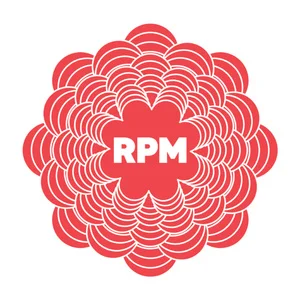

Taking on Fossil Fuel Giants with David Alexis
Tonight we’ll continue our series of interviews with the DSA For The Many Slate with David Alexis, a rideshare driver, working class father and climate organizer who is running to represent Senate District 21 in Flatbush, Brooklyn
Many began 2022 with some hope that with Andrew Cuomo out of office, New York might finally be able to pass a state budget that meets the needs of working class people. The budget was due April 1st and is now five days late. Much of the hold up is because of last minute additions from Governor Kathy Hochul to roll back bail reform within the budget and fund a new stadium for the Buffalo Bills, owned by billionaire fracker Terry Pegula. And it's not just Governor Hochul doing the bidding of fossil fuel capital in Albany. We talk to David Alexis about his campaign to unseat Senator Kevin Parker who has stalled climate legislation in Albany earning him the nickname the “Joe Manchin of New York.” We’ll hear why David is fighting for Public Power for his neighbors in Flatbush, how being a dad impacted his run for office and his vision for public safety and housing.
Follow @David4BK or visit https://www.davidforbk.com/ for more info on David.


Colorado Springs DSA Statement on Public Sector Workers’ Rights Bill
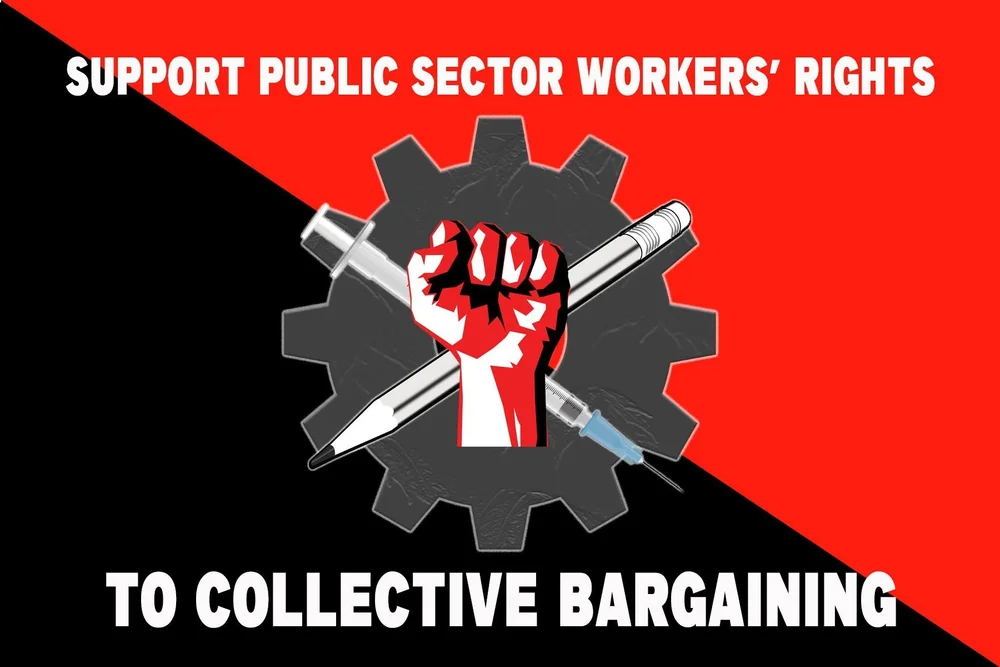
Colorado Springs Democratic Socialists of America supports strong legislative protections for public sector workers. We support a bill that will allow all public sector workers the same rights that other workers enjoy, to collectively bargain, including the right to strike. We support a bill that respects and celebrates public sector workers who contribute to the state of Colorado and its citizens every day. Colorado Springs DSA believes that public sector workers deserve a seat at the table and to be part of the decision making process in their workplace. Colorado Springs DSA supports a strong bill that gives public sector workers democracy, not just at the ballot box, but also in the space where they spend the largest portion of their waking lives.
The right to collectively bargain is a basic right enjoyed by most workers in the state of Colorado and throughout the U.S. To deny this right to workers serving the public is to tell firefighters, teachers, healthcare workers, and anyone that serves the community that they don’t deserve basic dignity. A strong bill granting public sector workers the right to do what any other worker can do is simply asking for respect and equality. This is what the Colorado Springs DSA stands for and nothing less. If Governor Polis is worried about the ability to strike, maybe he should ask himself why this would even be a concern. Is Governor Polis aware of the low pay, poor treatment, and mediocre benefits of the people who serve the citizens of Colorado? Does he not care? Is he worried that empowered workers might actually have a reason to strike?
Colorado Springs DSA demands that any legislation pertaining to public sector workers’ rights be fair and equal, not simply meaningless gestures. If the bill moving forward creates no real or meaningful change, the bill is less than useless. Any bill not granting public sector workers the same rights as other workers is simply spitting in the face of public workers. A weakened bill tells public sector workers that they aren’t worth as much, and that’s something we cannot stand for. We believe in democracy in the workplace. We believe that public sector workers have every right to make their voice heard and have a real and meaningful say in how they spend the vast majority of their lives. Let it be clear, any bill that fails to give workers the right to strike and collectively bargain is a bill that Colorado Springs DSA will actively and vocally oppose.


Building a Movement at Starbucks with Starbucks Workers United
We spoke with a Starbucks worker-organizer from Buffalo, NY back in January here on RPM, and since that time the fight has only gotten hotter. As of today, over 170 Starbucks locations in 27 states have filed for elections with the National Labor Relations Board – including several right here in New York City! With union victories in Buffalo, Arizona, Tennessee, at the heart of the Starbucks mythology in its hometown of Seattle, Washington, and more coming in every day, Starbucks corporate is upping the pressure on organizing workers and resorting to classic union-busting techniques. This month, DSA’s national labor commission launched a nation-wide campaign to engage DSA members and allies in support of coffee workers unionizing locally. On tonight’s show, we’re live in the studio with Aimes, a Starbucks worker-organizer from the Starbucks Roastery in Chelsea, Manhattan, and Honda, from the national DSA Labor steering committee. We’ll be discussing Starbucks union campaigns in New York City, and what you can do to support local workers no matter where you’re tuning in from.
Follow @DSA_Labor and @SBWorkersUnited for updates on this campaign. Join Astoria Boulevard Starbucks worker-organizers for a rally on Friday, April 1 at 6pm outside their store at 3018 Astoria Boulevard, and follow them at @astoriablvdsbx. Solidarity to the worker-organizers of the Chelsea Reserve Roastery on their election on 4/1, and to all retail and service workers organizing today.


The Drug War is A Class War
Tonight we’re joined live in the studio by Sessi Kuwabara Blanchard and Jacob Clary, organizers from NYC-DSA’s Socialist Drug Politics Organizing Committee. We discuss the class politics of drug use, overdose prevention centers AKA safe injection sites, and much more. Learn how the transformative perspective of socialist drug politics offers different ways of understanding drug use and the social forces that shape users' experience.
We also return to the South Bronx, where survivors of January’s devastating Twin Parks fire and their supporters are fighting for what they are owed from the city and landlord, in the face of corruption that may go all the way to the top of New York’s political structure. We speak to Ariadna Phillips from South Bronx Mutual Aid and Misra Walker from Take Back the Bronx on building real tenant power.
Follow the Socialist Drug Politics Organizing Committee on Twitter @socialistdrugs.
Join VOCAL-NY's Users Union for a Statewide Day of Action on April 7. The NYC event is a rally on the steps of City Hall at 11am. Sign up to receive more details here: https://vocal-ny.org/event/04-07-22-users-union-statewide-day-of-action/


SA DSA Stands in Solidarity with Starbucks Workers
San Antonio DSA expresses solidarity and support for the Starbucks baristas who are joining together and standing up for their rights as workers to form a union. Starbucks claims to be a progressive company, so they should live up to their professed values and stop making threats and intimidating their own employees. We know Starbucks workers will win their union, and with it the power to demand basic dignities such as reasonable scheduling, proper training, and a fair share of the record profits they’ve brought in.
The energy and demand behind the union drive came from the workers, but we’ve offered what we would to anyone—an organizer skills training, connection to our DSA city council representatives, and the solidarity of showing up. We urge everyone to support the unionizing workers by using the name “Union Strong” or “Union Yes” with their order, making sure to tip baristas, and by joining our national Solidarity is Brewing! campaign kickoff on March 27th at 5pm: https://actionnetwork.org/events/solidarity-is-brewing-launch-call/
First Starbucks, then the River Walk! All service workers deserve a union. dsausa.org/join


Colorado Springs DSA Statement on CSPD Undercover Surveillance
The Colorado Springs Democratic Socialists of America condemn the actions of the Colorado Springs Police Department for their undercover surveillance of Colorado Springs DSA members and actions, along with other local leftist organizations. Such surveillance is anti-democratic and is intended to intimidate left-leaning individuals in an effort to prevent organizing efforts that promote equity and justice and threaten the current distribution of power.
We call on all democratically elected city leaders to join us in publicly condemning the unwarranted undercover surveillance of above-ground democratic organizations. It is vital that our leadership sets a precedent for the city that any threats to our democratic process will not be tolerated. We citizens of Colorado Springs deserve to live in a city where we are free to exercise our democratic rights to organize peacefully for policies that reflect our values. Regardless of political orientation, all city leaders must come out against actions that undermine the very democratic process that got them elected so that we can continue to have free and fair elections for people of all political affiliations. A threat to one is a threat to all.
We also call on all leftist organizers, including Colorado Springs DSA members and others targeted by CSPD, to publicly condemn the actions of CSPD. In the face of aggression and intimidation, it is more important than ever for us to take a stand and let CSPD know that we will not back down from organizing for the change we want to see in the city.
In addition to undercover surveillance, there have been allegations of attempts by CSPD to manufacture crime where there is none. Recently some leftists have reported attempts by the undercover officer, April Rogers (alias Chelsie Kurti), to entrap members of the leftist community into helping her acquire illegal firearms, as well as to lay the foundation for the organization of an armed left-wing militia. While we applaud the integrity of our leftist comrades in declining to cooperate, we must also take a stand against the efforts of CSPD to manufacture crime that could then be used to entrap naturally law-abiding members of the leftist community.
We also call out the dishonesty in CSPD’s official media statement on their actions. Their insistence that, “CSPD does not target groups or organizations based upon political affiliation or ideology. We are committed to safeguarding our citizens’ constitutional rights, including freedom of speech and the right to assemble. CSPD does however investigate criminal activity or allegations of criminal activity even if that person is a member of a political organization,” is not only misleading to the public, but is also false. In addition to attempts to instigate criminal activity, officer April Rogers also committed a misdemeanor crime under Colorado State law for registering to vote under her false identity. These actions are not only hypocritical and indicative of police corruption, but are further signs of an abuse of power meant to oppress a left political movement.
As an official chapter of the Democratic Socialists of America, we value the preservation and expansion of democracy to create a more just and equitable world for all. We will continue to organize for the realization of our values unabashed and unafraid, and we are dedicated to peacefully pushing back against any efforts to silence or intimidate our organization and our individual members. We stand together as proud champions of justice and democracy, now and always.


Freedom for Ukraine and Prakash
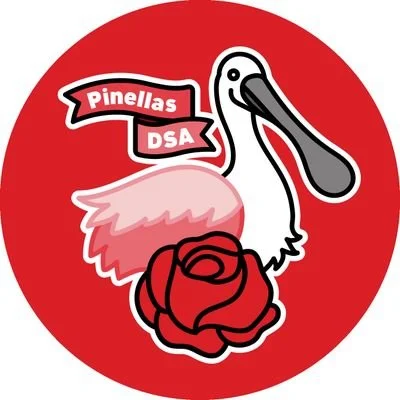

Phil Ochs: The Radical Singer/Songwriter of the New Left
By Pinellas DSA member Bruce Nissen
Editors note: at the end of this post, you will find a link to a presentation by Bruce Nissen on this subject, as a supplement to this post.
As a DSA member who is over 70 years old, I’m finding that a lot of my young comrades are very curious about what it was like in the 1960s and early 1970s. And, mystifying to me, a number of them are fascinated by tales I can tell of my “radical student days” during those years. I’ve never thought my own life was all that interesting, but I will admit that the late 1960s were indeed very, very interesting times. I am very grateful that I came to political maturity in that period; it certainly shaped the trajectory of rest of my life.
One enormous part of the 1960s campus milieu was the music. Especially folk music and rock music were integral to the emerging “youth culture,” and some of it took on a decidedly political tone. Here I want to highlight one very radical singer-songwriter of the time who apparently very few of my younger friends have ever heard of. I saw him live numerous times; he was a major radicalizing force to me and many others. He was one of my heroes.
His name was Phil Ochs. He was a contemporary of Bob Dylan and they both emerged from the Greenwich Village folk scene in the early/mid-sixties. Dylan of course went on to fame and fortune and a long life. Phil had a much more tragic trajectory; he took his own life in 1976 when at the bottom of one of his manic-depressive cycles. Despite this sad ending, Phil was an incredible songwriter and performer who influenced many of us at the time.
What I want to do here is introduce my younger DSA comrades to Phil Ochs, primarily through exposure to his songs and performances. What follows is a series of links to YouTube videos of Phil Ochs performances.
Many (although not all) of Phil’s songs were topical commentaries on the events of the day. With the Vietnam War raging, opposition to that war was a common Phil Ochs topic. Here is Draft Dodger Rag, one of the first of his songs I ever heard:
https://www.youtube.com/watch?v=tFFOUkipI4U
Another anthem of the anti-Vietnam War movement was his song I Ain’t Marching Anymore:
https://www.youtube.com/watch?v=uRU_ruqnR6Q
And as the war dragged on into the 1970s, his song The War is Over was his attempt to hasten its demise. Here he is performing it live:
https://www.youtube.com/watch?v=ZOs9xYUjY4I
Of course, the Vietnam War was not his only target. Here is his anthem against police, I Kill Therefore I Am: https://www.youtube.com/watch?v=VQBLBvi67fw
Some of his music consisted of tributes to those songwriters who had gone before him who he admired. One was Woody Guthrie, America’s troubadour who wrote This Land is Your Land and many other songs, and who was much more radical than the sanitized version of him that has been passed down to us. Here is Phil’s salute to Woody, Bound for Glory:
https://www.youtube.com/watch?v=xONuHXndRuI
Another radical singer/songwriter of earlier vintage that he greatly admired was Joe Hill, the organizer for the radical union the Industrial Workers of the World (IWW, or Wobblies). Here is Phil’s song The Ballad of Joe Hill: https://www.youtube.com/watch?v=kozWk8Ff_Xg
Not all of Phil Och’s songs were overtly political. He also wrote some haunting ballads that are more personal. Here I want to simply highlight two that have been covered by many other artists. First up, perhaps his most beautiful song of all time, Changes (this one has a lot of great pictures of Phil in the video): https://www.youtube.com/watch?v=rlVfVBFdMaM
And his There But for Fortune has also been covered by many other artists and folksingers:
https://www.youtube.com/watch?v=Smlg7sPUmRs
There are so many more Phil Ochs songs that are burned into my brain, but I fear that this could go on too long, so I won’t put any more in this article. In his final years, as his life was unravelling he went through a “gold lame suit” Elvis Presley-Merle Haggard phase that failed to connect his radical politics with his gestures toward American pop culture: his old fans hated it and apolitical pop music fans did not pick up on his music at all. Near the end he wrote some extremely poignant and revealing songs, like Crucifixion, Another Age, My Life, Chords of Fame and others. You can find almost all of these and many more on YouTube. In addition a fair bit of his music is possible to buy. There is a documentary film on his life There But for Fortune and folk musicians still celebrate his life and legacy through tribute get-togethers around the country.
He was an extremely flawed human being. But at the time he was my hero. I’m hard pressed to think of any contemporary vocal artists today who play a similar role to the one he played in the 1964–1974 period. I believe my young DSA comrades would benefit from an acquaintance with his work.
A presentation on the subject by the author can be found here: https://youtu.be/JFMPEfUoz6s